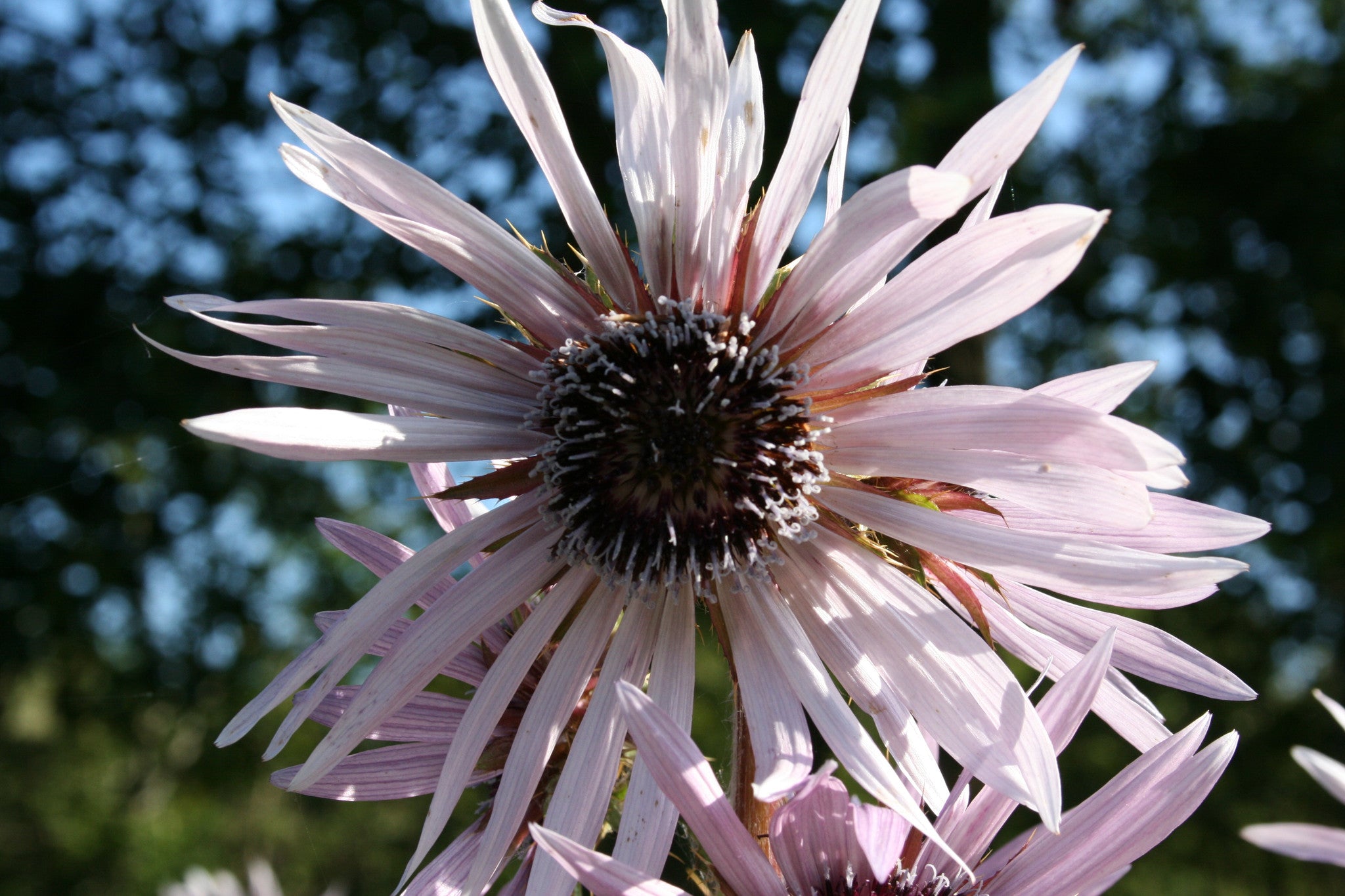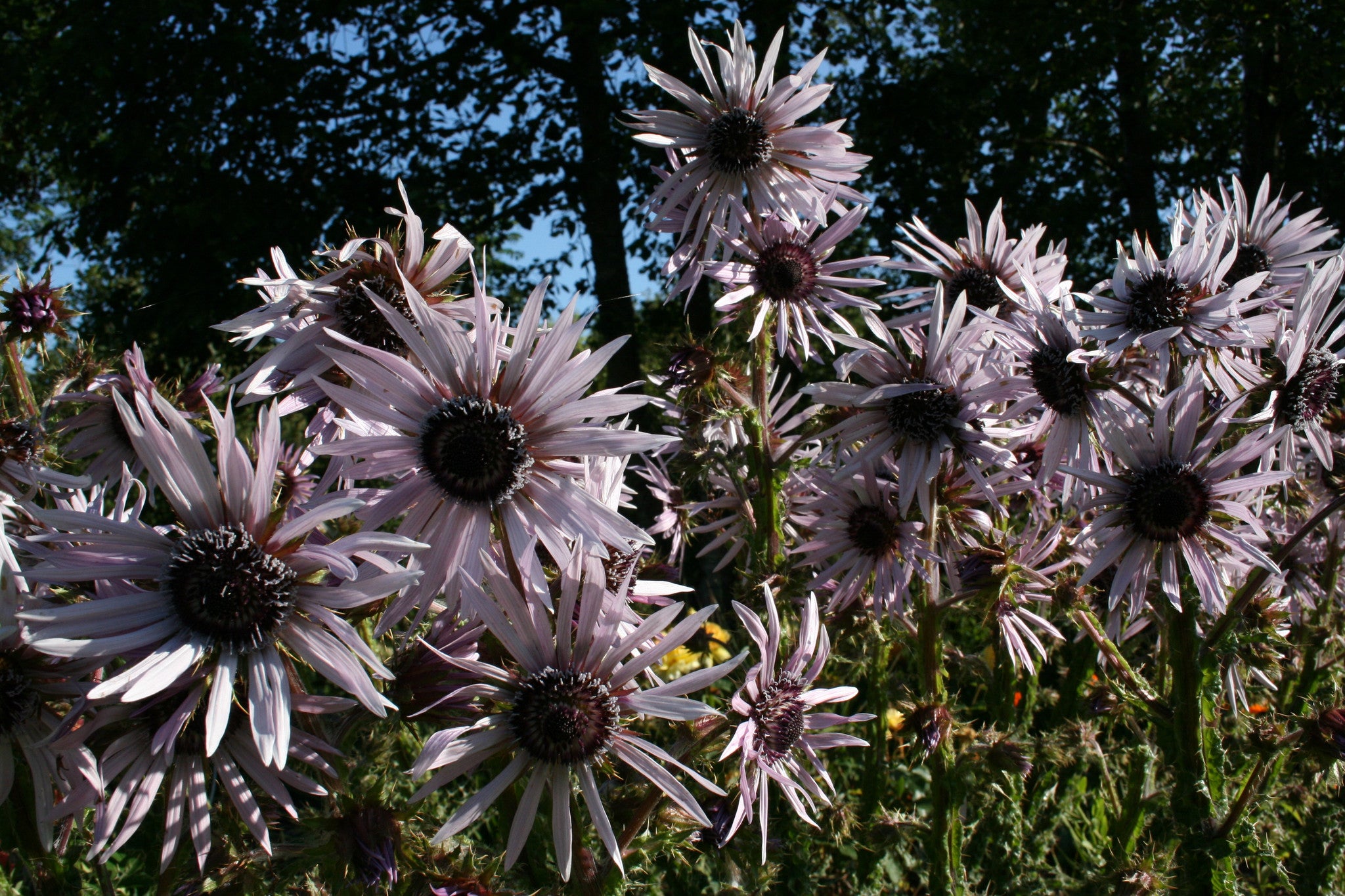Berkheya purpurea
Approx. 0.5 litre pot
About this cultivar:
Berkheya purpurea is the only mauve to purple flowered species in the genus (most are yellow or occasionally white), and was first described in 1838 by the French botanist Augustin Pyramus de Candolle, who named it Stobaea purpurea. It was renamed Berkheya purpurea in 1872. The lavender “sunflowers” are ornamented with a deliciously dark, puffy, purple button centre atop spikey stalks. Makes an impression.
- Position: Full sun, Partial shade
- Soil: Almost any soil - grows well in Ballyrobert!
- Flowers: June, July, August
- Other features: Interesting Foliage or Fruit
- Hardiness: Fully hardy - grows well in Ballyrobert!
- Habit: Clump forming, Columnar or Upright
- Foliage: Deciduous
- Height: 90 - 120 cm (3 - 4 ft)
- Spread: 45 - 75 cm (1.5 - 2.5 ft)
- Time to full growth: 2 to 5 years
- Plant type: Herbaceous Perennial
- Colour: Purple, pink, green
- Goes well with:
About this genus:
Berkheya is a genus of flowering plants in the aster family, Asteraceae, and the subfamily Carduoideae, the thistles. There are about 75 species of Berkheya, that take the form of shrubs and perennials distributed throughout tropical Africa. Originally named after the Dutch botanist Jan le Francq van Berkhey (1729–1812) by the German botanist Jakob Friedrich Ehrhart in 1788.
Of the 75 species, 71 can be found in South Africa, thus they are commonly known as the African thistle but I think 'spike sunflower' would be a better name. In their native habitat most of them can be found on mountains and by streams. Thus they tend to be tough and grow in a wide variety of places, even rock gardens. In some areas of Africa they are regarded as weeds. Not on the British Isles though - I think our climate is too mild for them to become a weed; so they are perfect for our gardens!
Most species have yellow ray florets, a few have white, and B. purpurea has light purple or mauve florets. I think they are best used with other tall plants, such as Helianthus or grasses.




